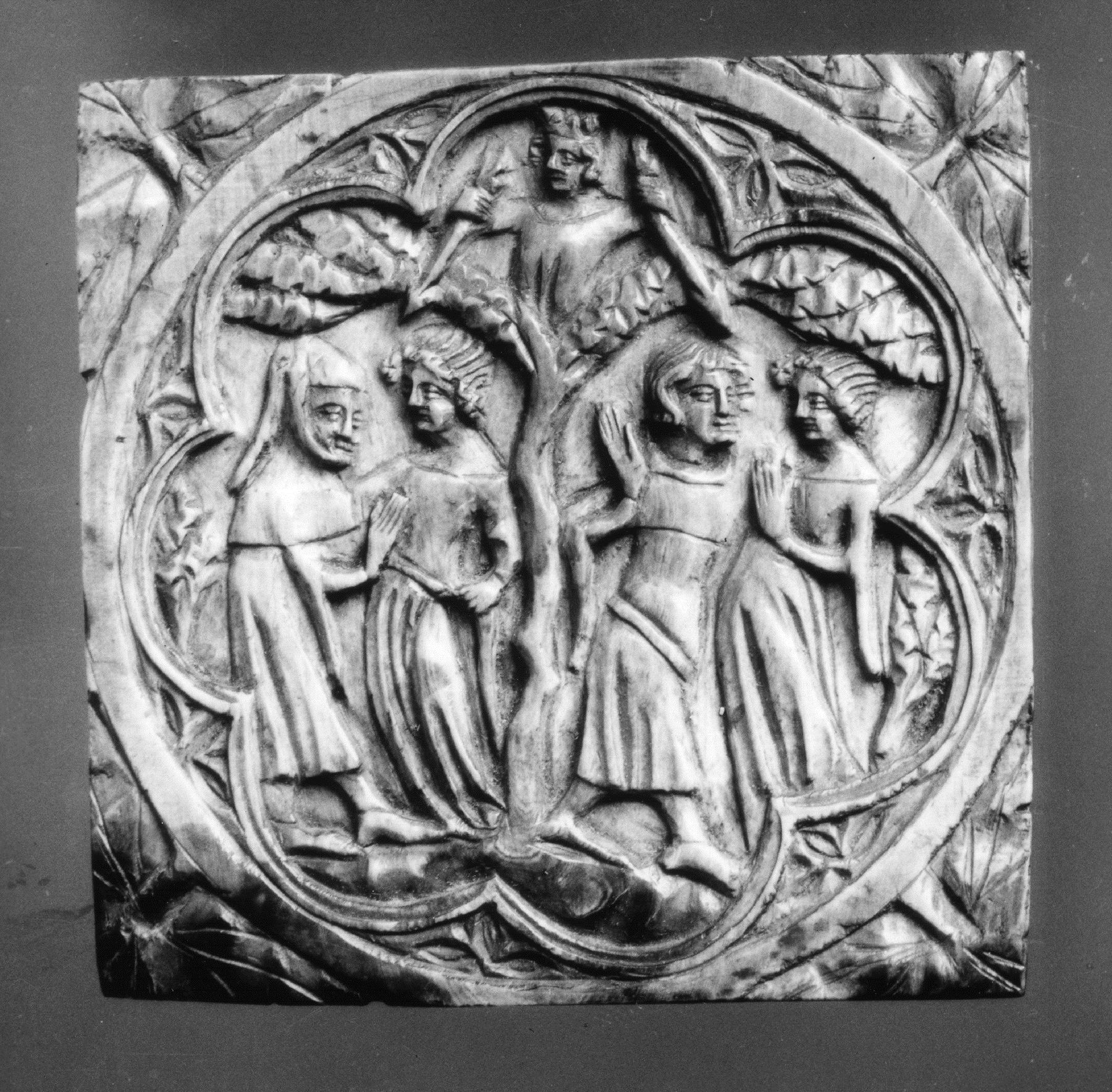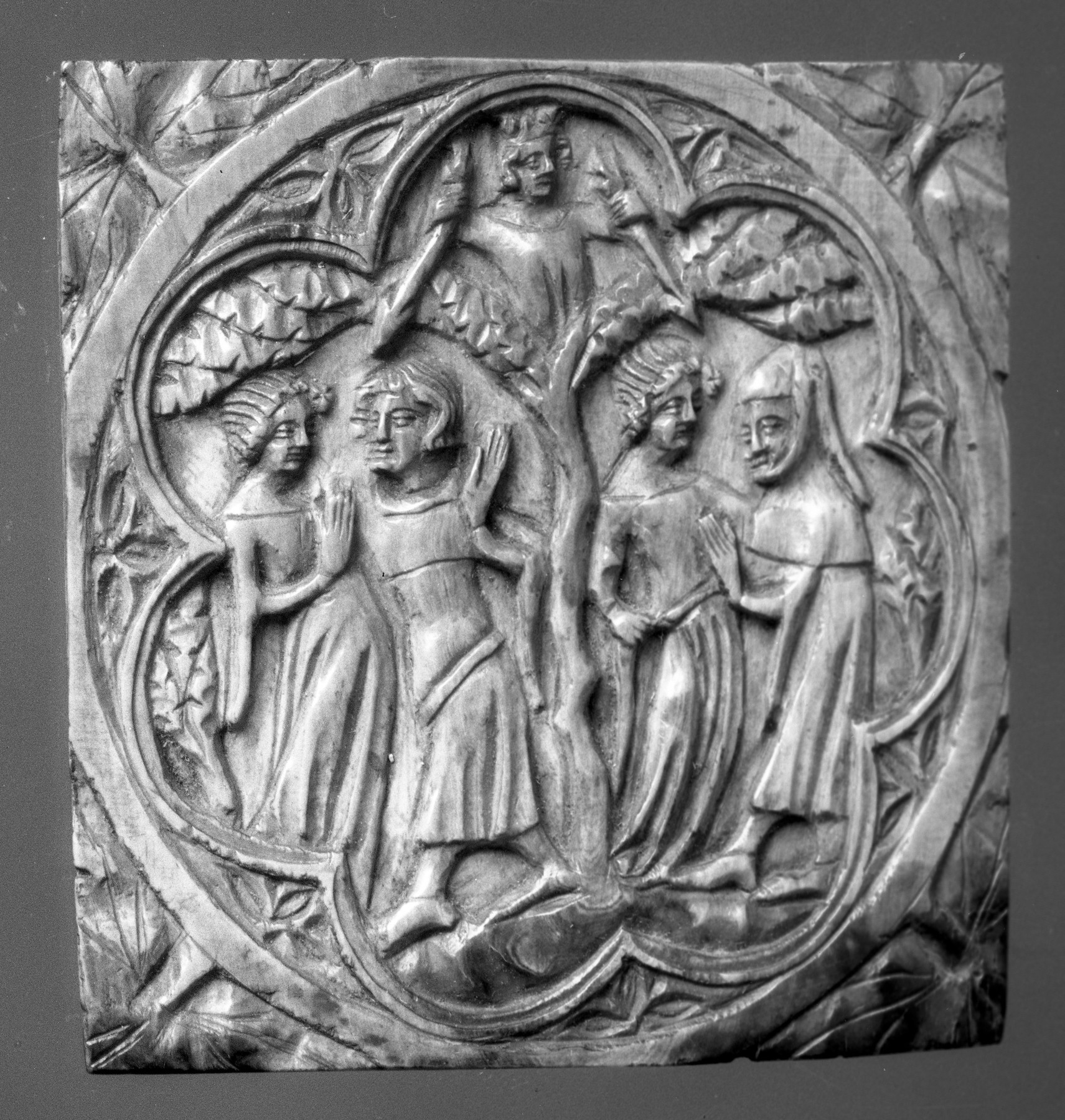Plaque with the God of Love
(Medieval Europe )
Two couples are seen beneath a tree, from which the God of Love throws arrows down upon them. The scene is set within a seven-lobed frame, with three-pointed leaves in each spandrel. The corners are brought to a square with leaf-corner terminals. The liripipes from the hoods and sleeves of the lovers suggests a date in the 2nd half of the century.
The plaque is cut square, trimming the edges of the circular frame on three sides. The back is polished smooth and does not seem to have been altered from a mirror case, as had been suggested. Its original use is unknown; it could have been the cover of a square box, an ornament for a book cover, or inset in some object. It has been burned in the lower side and discolored, most noticeably at the lower left corner.
Provenance
Provenance (from the French provenir, 'to come from/forth') is the chronology of the ownership, custody, or location of a historical object. Learn more about provenance at the Walters.
Léon Gruel, Paris [date and mode of acquisition unknown]; Henry Walters, Baltimore, 1925, by purchase; Walters Art Museum, 1931, by bequest.
Geographies
France (Place of Origin)
Measurements
H: 3 1/16 x W: 3 1/16 in. (7.8 x 7.7 cm)
Credit Line
Acquired by Henry Walters, 1925
Location in Museum
Not on view
Accession Number
In libraries, galleries, museums, and archives, an accession number is a unique identifier assigned to each object in the collection.
In libraries, galleries, museums, and archives, an accession number is a unique identifier assigned to each object in the collection.
71.207




